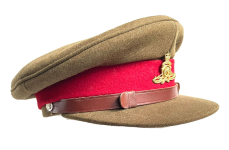- Reaction score
- 18,792
- Points
- 1,160
I don't for one minute deny that this is the thinking that goes on and is the thinking that has gone on for the last fifty years and will continue to go on indefinitely until an MND is put in place with a mandate to reform DND from the top down. Bureaucracies are bureaucracies regardless of the colour of suit that they wear.I don't disagree with you in the broad strokes, but in the very real "here and now", the current size of the standing full-time forces are not enough to meet the requirements of the GoC. Cutting those numbers to make more "break glass in case of emergency" troops is not the solution.
I don't believe that it comes from the GoC. I think its bureaucratic friction that influences political minds.It's not the RegF that thinks in terms of "what have you done for me lately?", it's the GoC. If you can find a way to make the GoC think longer than 3-4 years please do so, but until then, we need to work with what we have. Making larger numbers of as @KevinB says "fair weather"* soldiers isn't the solution.
It's a chicken and egg argument. Exchanging full-time numbers for equipment and part-timers could be sold as a win-win situation. It won't happen, however, because the military leadership refuses to see it as that and there will always be some admiral flapping his gums. Full-time numbers are our "d*ck measuring" standard. No one cares how many hanger-queens there are as long as we can keep a battle group deployed. The managed readiness plan and whole fleet management plans were the army's acknowledgement that running a shell-game is fine as long as no PYs are cut.The RegF of the 50s-60s doesn't exist anymore. It was killed-off by budget cuts, and the "peace dividend". The only reason the RegF seems to expensive is because the GoC invests too little in the CAF overall. If we had a realistic budget for maintenance and life cycling of kit and infrastructure the pers % of the budget would be more realistic. The reason it's skewed so high on pers costs is because the GoC can't stop paying the troops without bad headlines, but cutting maintenance kicks the bad headlines down the road for decades...
This gets me back to pejorative language vs true programs to make the reserves more effective. A reserve force which trains for the needs of the country is politically acceptable. The problem is that the full-timers consider the use of reservists to suit their own convenience (think the thousands of Class B's filling cubicles) as the pinnacle of reserve service. Obviously compulsory call-out on less than national emergency levels would be unacceptable. You'd be surprised how much tolerance people have when they aren't lied to.*making the ResF less "fair weather" would require spending more political capital than just spending more of defence, so it's an unrealistic solution at this time.
I keep telling people, our legislation and regulations are every bit as coercive as the US Army's. So the politicians have already made the decision as to where the red line is. The problem is that our military leaders are risk averse pussies when it comes to this area of the law/policy. QR&O 9.04(2) says that a CO can order a reservist to train up to 15 days Class B and 60 days Class A per year. That's an order in council from the government. Show me the general officer that has seen fit to enforce even a part of that. Our reservists are "fair weather" because the army (not the government)

Last edited:



